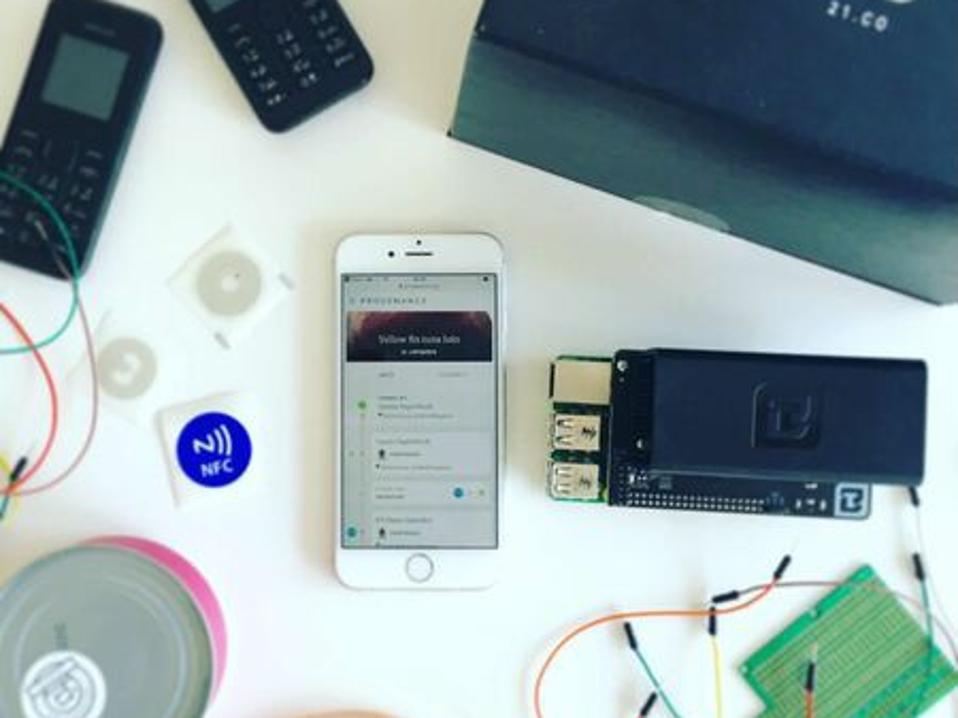Today, the way in which transactions are secured and trusted on blockchains uses colossal amounts of … [+]
AFP via Getty Images
On a January day twelve years ago, as protesters occupied Wall Street’s Zucotti Park to protest economic inequality, an anonymous developer deployed bitcoin’s original reference implementation.
Coded into the first 50 transactions was a secret message: “The Times 03/Jan/2009 Chancellor on brink of second bailout for banks”. For myself and many others, this remains a clear indication of bitcoin’s intended purpose: to offer an alternative to an unjust global financial system controlled by central banks and politicians.
Social impact-focused applications for blockchain tech have always been a core part of the space. Back in 2013, when I first began exploring its potential to prove impact in supply chains, others were using these decentralised networks to enable fair banking for the unbanked, or to track charitable donations and carbon credits.
So what is it about blockchain technology that makes it an effective tool for building a fairer, more sustainable world? And crucially, does blockchain’s growing carbon footprint render the benefits null and void?
What makes blockchain a powerful tool for driving social impact?
Blockchain has the power to drive positive impact at immense scale. Part of this power lies in the alignment of network value creation through participation. Unlike centralised networks like Facebook, Twitter or Uber
UBER
The power of decentralised networks also lies in their transparency. On a blockchain, every transaction is verified by multiple parties and no one is able to edit the data without alerting the entire network. Unlike the algorithms of big tech – which are kept secret and constantly changing – blockchain contracts are public, as are the laws around who can change them and how. The result is a tamper-proof, transparent system which famously earned blockchain its reputation as “the trust machine”.
Thanks to these characteristics, applications built on blockchains have the potential to incentivise positive social and environmental impact – from changing wealth distribution to aligning finance with protection of nature. Blockchain can enable Universal Basic Income through a system like Circles, or power local currencies like Colu. It can enable inclusive financial systems like Celo or provide universal access to cash with Cash App. It can also drive protection of environmental assets through systems such as Seeds or Regen Network.

An early Provenance experiment of tracking products on the bitcoin blockchain (we even connected an … [+]
Provenance
I’m passionate about blockchain’s potential to create positive system change. Add to the above the power to incentivise a circular economy and revolutionise the distribution of charitable donations – and we’re still only scratching the surface of world-changing applications that will be enabled by blockchains.
However, bitcoin and other similar public blockchains have a huge flaw – they use an extremely large and growing amount of energy.
Blockchains are energy-guzzling by design, but there is another way
The way in which transactions are secured and trusted on the blockchain is highly energy intensive. In fact, blockchains currently account for 0.58% of global electricity consumption, whilst Bitcoin mining alone consumes almost as much energy as the entire U.S. federal government.
This means that today, when it comes to discussing sustainability and blockchain tech, you have to balance the longer term systemic benefits, against today’s urgent need to reduce fossil fuel consumption.
Thankfully, there are greener ways to power public blockchains. One of the most promising solutions is ‘Proof of Stake’, a consensus mechanism which does away with the energy-intensive mining process required by ‘Proof of Work’, relying instead on network actors staking financial assets on their own future trustworthiness. The Ethereum community, users of the world’s second-largest cryptocurrency, have already invested close to $9bn in transferring to Proof of Stake, which it may complete as early as October. A Bloomberg report this week suggests Ethereum’s transition could cut its energy use by over 99%.
There’s also a conscious drive amongst the crypto community to address the type of energy being consumed (or better, use the technology to accelerate adoption of greener energies). Last month, the newly launched Crypto Climate Accord — including Ripple, World Economic Forum, Consensus, Coin Shares and Energy Web Foundation — announced its goal for all of the world’s blockchains to be powered by 100% renewables by 2025.
Today, blockchain’s carbon cost limits its overall value add – at Provenance, for example, we’ve adopted an approach which transacts with the blockchain sparingly, prioritising key points of impact verification only. However, if Proof of Stake proves as robust as Proof of Work, it would unlock a climate-friendly tool to incentivise sustainable practice and increase trust at scale. The potential is huge, not least when it comes to transforming global supply chains for the better.

Presenting at the Ethereum Developer Conference One (DevCon1) in 2015. Ethereum is closing in on a … [+]
Provenance
Blockchain in supply chains: from traceability to proof of impact
The vanilla use case of blockchain and supply chains is centred on traceability and asset tracking. And that was where Provenance started experimenting back in 2014: tracking items across the supply chain to deliver public transparency on product origin. But as we learned, traceability alone doesn’t solve the most important problem for citizens and brands. Proving a product’s origin is not the same as proving its impact on people and the planet.
We went back to the drawing board to explore how the “trust machine” might help accelerate the availability of trustworthy information about the social and environmental impact of products. The result was Proof Points, which was awarded the European Innovation Commission’s Horizon Prize for ‘Blockchains for Social Good’ last year. Proof Points translate data from traceability tools, auditors and verifiers in the supply chain into shopper-facing impact claims – recorded on a public blockchain. These claims appear on e-commerce pages or in off-pack experiences as interactive icons, allowing shoppers to explore credible, ‘tamper-proof’ impact information at the point of sale.
As well as using energy-intensive public blockchains very sparingly compared to traceability systems, I see Proof Points as part of a new way to trust information about brands and products on the web. And what’s more, we’re only in phase one of this idea. The vision extends beyond today’s relatively simple proofs, to a cryptonetwork that incentivises a race to the top where the brands and products with the most positive impact win.

Blockchain-enabled Proof Points are enabling greater levels of trust between shoppers and … [+]
Provenance
Building a fairer, more transparent future on blockchains
Today, we cannot afford to ignore blockchain’s growing carbon footprint. However, with ambitious changes to both the volume and the type of energy the technology uses, we could soon unleash a tool with the power to incentivise social and environmental progress at scale.
As with any new technology, blockchain’s path from concept to practical enterprise solutions is not a straight line. You might personally have witnessed or overseen projects which failed to deliver, and I understand where there is skepticism.
But with incredibly exciting applications emerging every day, and serious thought and investment going towards reducing blockchain’s energy consumption, I would urge you not to write off the value it could bring. The opportunities for business and for our planet are huge, not least when it comes to increasing trust through public transparency.
